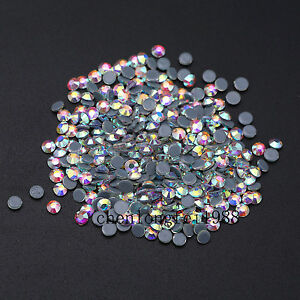You may have noticed that the color of rhinestones often changes when exposed to sunlight. This change is permanent and is due to the treatment applied to the rhinestones during manufacturing. If you are purchasing a set of gold or silver-treated rhinestones, these will change color. In contrast, crystal clear rhinestones will remain the same color, as they do not have a metallic coating.

Wholesale rhinestones can also save you money. Many times, buying stones in bulk is cheaper than purchasing smaller quantities. This can be attributed to many factors, including reduced packaging, easier storage, and clearing out unsold stock. Furthermore, buying a large number of stones will lower your shipping costs, as you won’t be making several trips to the store. Purchasing a large number of stones will also reduce your overall shipping cost, which will add up over time.
Flatback rhinestones come with a backing or are not. Unfoiled crystals are usually used in jewelry, while foil-backed ones are ideal for applying to most surfaces. If you’re applying rhinestones to a garment or to a product that has an adhesive backing, you may want to use a hotfix adhesive. Once you’ve applied the backing to the piece of clothing, the stones will stick to it, creating a secure and easy-to-apply look.
Vintage rhinestone pieces should be free from flaws. Rhinestones have been in fashion since the mid-to-late 1800s, and their popularity has continued to grow ever since. During the 1950s and early 1960s, they were used in high-end fashion pieces. Today, rhinestones are a popular commodity in the antique market. If you’re looking for vintage pieces with the best vintage value, you’ll have a hard time finding a better deal.
Rhinestones are a great way to add class and elegance to any outfit. Whether you are sewing on your own or purchasing a cheap jewelry piece, rhinestones can make your outfit sparkle with class and elegance. Rhinestones are glass or crystal imitations that look like diamonds. These glass or crystal ‘jewels’ have a flat bottom and a pointed back, making them perfect for embellishing clothing.
When adding rhinestones to a garment, it is important to use a good sewing needle and thread to avoid damaging the fabric. Regardless of which type of rhinestone you choose, make sure you have good lighting and that you knot the thread every time you sew. This way, your rhinestones won’t come loose until a couple of hours have passed. The rhinestones will stay in place, but they won’t be easily seen on the garment, making them a great accessory for any outfit.
As a matter of fact, rhinestones come in many different shapes. Some are round, while others are shaped like navette. Other shapes include oval, square, and round. Pointed-back rhinestones are often found on handbags and other jewelry. Flat-back stones are mostly used on clothing and are applied directly to the fabric. While the rhinestones are shaped like a diamond, they are made from synthetic material and are therefore cheaper.
Swarovski technology was invented in the 19th century and allowed for the mass production of high-quality crystal glass rhinestones. Compared to other rhinestones, Swarovski crystal glass rhinestones contain more lead, increasing the refraction index of the rhinestone and making them sparkle more. In 2004, Swarovski patented their Xilion Rose 2028 cut, which consists of 14 facets.
Before rhinestones were developed, they were actually shaped like rock crystals in the Rhine. Eventually, these rocks were depleted, and jewelers began to make fake stones that resembled the look of real diamonds. This is the most popular way to replicate rhinestones today because the look and feel of diamonds are immeasurable. So, why would you buy fake diamonds?
In the 13th century, a rock crystal found near the Rhine river was used to make rhinestones. Eventually, this material became harder to find, but rhinestones can be made of any stone, glass, or plastic. The process of making rhinestones varies, but the basic principle remains the same: a glass stone is cut on a machine, whereas a stone is cut by hand.